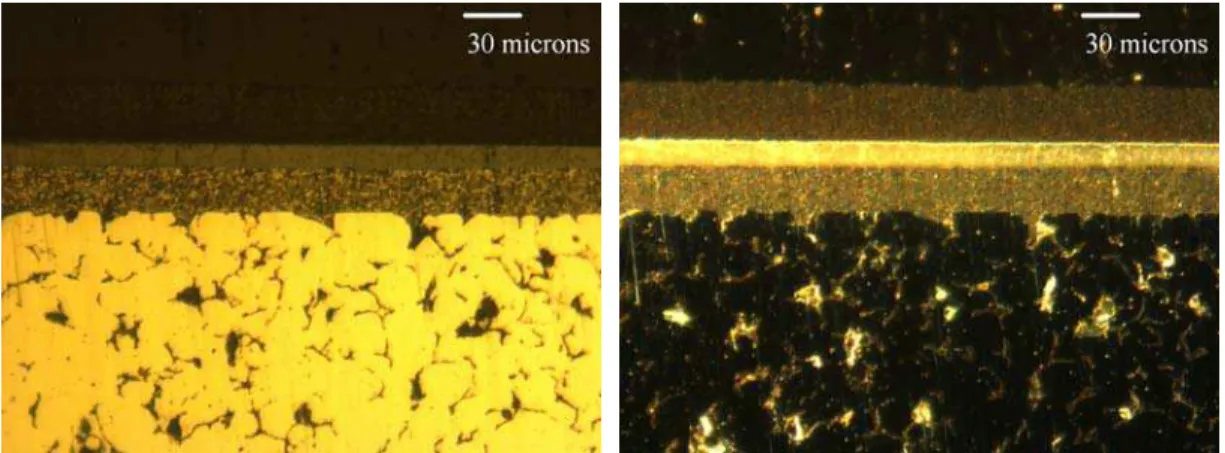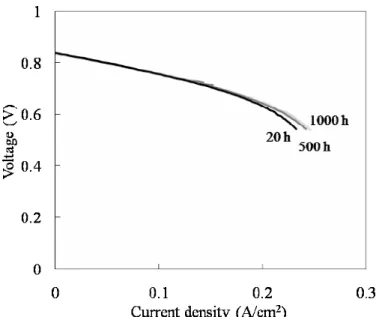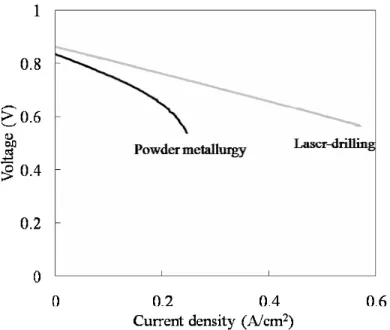Publisher’s version / Version de l'éditeur:
ECS Transactions, 25, 2, pp. 739-744, 2009
READ THESE TERMS AND CONDITIONS CAREFULLY BEFORE USING THIS WEBSITE.
https://nrc-publications.canada.ca/eng/copyright
Vous avez des questions? Nous pouvons vous aider. Pour communiquer directement avec un auteur, consultez la
première page de la revue dans laquelle son article a été publié afin de trouver ses coordonnées. Si vous n’arrivez pas à les repérer, communiquez avec nous à PublicationsArchive-ArchivesPublications@nrc-cnrc.gc.ca.
Questions? Contact the NRC Publications Archive team at
PublicationsArchive-ArchivesPublications@nrc-cnrc.gc.ca. If you wish to email the authors directly, please see the first page of the publication for their contact information.
NRC Publications Archive
Archives des publications du CNRC
This publication could be one of several versions: author’s original, accepted manuscript or the publisher’s version. / La version de cette publication peut être l’une des suivantes : la version prépublication de l’auteur, la version acceptée du manuscrit ou la version de l’éditeur.
For the publisher’s version, please access the DOI link below./ Pour consulter la version de l’éditeur, utilisez le lien DOI ci-dessous.
https://doi.org/10.1149/1.3205590
Access and use of this website and the material on it are subject to the Terms and Conditions set forth at
Fabrication of cerium oxide based SOFC having a porous stainless steel support
Oishi, Naoki; Yoo, Yeong
https://publications-cnrc.canada.ca/fra/droits
L’accès à ce site Web et l’utilisation de son contenu sont assujettis aux conditions présentées dans le site LISEZ CES CONDITIONS ATTENTIVEMENT AVANT D’UTILISER CE SITE WEB.
NRC Publications Record / Notice d'Archives des publications de CNRC:
https://nrc-publications.canada.ca/eng/view/object/?id=b9cdf331-e9d6-45fa-9f88-b59eb2563854 https://publications-cnrc.canada.ca/fra/voir/objet/?id=b9cdf331-e9d6-45fa-9f88-b59eb2563854
Fabrication of Cerium Oxide Based SOFC Having a Porous Stainless Steel Support
Naoki Oishi, Yeong Yoo
Institute for Chemical Process and Environmental Technology National Research Council Canada, Ottawa, Ontario, K1A 0R6, Canada
Porous stainless steel supported solid oxide fuel cells having nickel-ceria cermet anode, ceria electrolyte and lanthanum strontium iron cobalt perovskite cathode were fabricated by using inexpensive technologies of spraying, pressing and firing. A ceria cell fabricated on a porous support was found to show long-term stability over 1000 hours at 600°C under different current densities with open circuit voltage being 0.84 V. It was shown that gas permeability in porous support had a great influence on fuel cell characteristics, and that cathode polarization accounted for half of the internal resistance in a porous stainless steel supported cell.
Introduction
For solid oxide fuel cell, stainless steel-supported cell structure offers a higher degree of mechanical stability and uses lesser amounts of exotic functional materials required for electrolyte, cathode and anode in making a cell over self-supported and electrode-supported types (1). It is of important to establish inexpensive technologies for cell manufacturing to further reduce costs. The conventional ceramic manufacturing process in producing ceramic bodies with powder materials includes molding, pressing and firing, which are all affordable technologies. The range of thickness of cell components is expected to be 1 to 30 microns; therefore, wet powder spray technology (2) is considered to be one of the candidates for forming cell components having thin thicknesses on a support for thickness controllability. By replacing molding with spraying, such ceramic manufacturing technologies can be exploited to make thin layers on a support. In this work, we report fuel cell characteristics of porous stainless steel supported ceria cells fabricated by using conventional ceramic technologies.
Experimental
The materials used for ferritic stainless steel supports were either ANSI-430 (Fe-17Cr) or SUS-447J (Fe-30Cr-2Mo), and two approaches were taken to introduce porosity in supports: powder metallurgy which involves molding, pressing and sintering process or laser-drilling of sheets. The obtained porosity of supports made by powder metallurgy in this study was about 15%, while variable porosity (5~20%) could be introduced by laser-drilling, depending on the density of hole and its size. The porous stainless steel support was passivated in nitric acid prior to fabricating a cell structure on it.
A tri-layer of anode, electrolyte and cathode was fabricated as follows (3). Firstly, an anode layer was deposited onto the porous support surface by wet powder spray using a
colloidal suspension. The sprayed anode layer was pressed by isostatic press to have the sprayed surface smooth, and then pre-fired at 900~950°C. Subsequently, an electrolyte layer was sprayed in a similar manner to the anode spray. After binder burn-out at ~500°C, the electrolyte layer was isostatically pressed to achieve a high level of packing density, and then fired at ~1050°C. A cathode layer was finally attached by spraying and firing at 850~950°C. Suspensions were prepared with a powder, organic agents (binder and/or surfactant) and alcohol medium. 55 wt% NiO - 45 wt% Ce0.8Y0.2O1.9 composite was used for the anode material, and Ce0.9Gd0.1O1.95 was used for the electrolyte. The cathode was La0.6Sr0.4Co0.2Fe0.8O3-x. In this work, zirconia was used as a sintering inhibitor for anode, whereas iron was used as a sintering aid for the electrolyte (4).
The fabricated cell on a porous stainless steel support was tested by using a potentiostat/galvanostat on hydrogen and air at 600°C with fuel and air utilizations being kept below 15% and 30%, respectively. Impedance measurement was also performed during testing.
Results and Discussion
Cross-sectional optical images of a tri-layer formed on a porous support made by powder metallurgy are shown in Figure 1. From the porous support upwards, Ni-Ce0.8Y0.2O1.9 cermet anode, Ce0.9Gd0.1O1.95 electrolyte and La0.6Sr0.4Co0.2Fe0.8O3-x cathode were structured. Although in this porous support there were many irregular dents having a diameter of 5~20 µm and a depth of up to 15 µm, the anode layer was found to be evenly formed without causing discontinuous structures over the dents, providing a smooth surface to the electrolyte layer.
The open circuit voltage at 600°C was 0.82 to 0.86 V on humidified 50% H2 and air under similar experimental conditions: laser-drilled porous support, thickness of anode and flow rate of fuel, depending largely on the electrolyte thickness with higher ocvs on thicker electrolytes; 0.86 V on 12~13 µm-thick electrolyte. The density of the sintered electrolytes remained unclear due to variability in thickness observed under scanning electron microscope, however, image analysis indicated a volume density of 96~98%.
Figure 2 shows long-term stability of a cell tested at 600°C under different current densities. Humidified 50% H2 and air were used for testing. The electrolyte thickness was about 12~13 µm, and the porous support was prepared by powder metallurgy, measuring about 1.2 mm thick. As can be seen, there was no noticeable voltage degradation for over 1000 hours during constant-current testing.
Current - voltage curves taken at 20, 500 and 1000 hours during long-term testing are shown in Figure 3. Open circuit voltage remained the same, approximately 0.84 V, which was slightly lower than that for a cell on a laser-drilled porous support, while current density increased slightly with time. As expected from slopes at low current densities in Figure 3, overall resistance (electrode polarization inclusive) obtained from impedance measurement under open circuit voltage remained almost unchanged, ~0.73 Ωcm2, between 20 and 1000 hours as shown in Figure 4. In our preliminary fuel cell test experiments at 600°C, open circuit voltage was found to gradually increase with time when fuel started to be fed into the anode, and it was thought that the nickel oxide in anode deposited onto such a thick porous support having a low porosity was not readily
reduced to increase porosity at 600°C. Accordingly, the increase in current density with time can be attributed to improved porosity over time in anode.
Gas permeability in porous support also had a great influence on fuel cell characteristics. Figure 5 shows the difference in current – voltage curve between cells having different porous supports: powder metallurgy and laser-drilling. As can be seen, a cell fabricated on a laser-drilled porous support could deliver more current than a cell fabricated on a porous support made by powder metallurgy. In laser-drilled porous support, drilled-pores are all open and regularly spaced, pointing in one-direction perpendicular to the support surface, the porous support is thought to cause the anode to become lesser polarized at higher current densities due to diffusion limitation. In fact, current – voltage curve for the laser-drilled sample appears to be linear within current density tested.
Figure 6 shows impedance plots of cells having different porous supports. Being different from powder metallurgy sample, laser-drilled sample appears to have one arc with a small shoulder at low frequencies, and the length of chord for the arc is similar to that for a high frequency arc observed on powder metallurgy sample, estimating specific resistance at around 0.25 Ωcm2. The difference in impedance plot can be related to the difference in porous support used, i.e. the powder metallurgy sample has a low frequency arc, while the laser-drilled sample does not have a distinctive low frequency arc, but has a small shoulder attached to the high frequency arc. It is therefore thought that the arc at high frequencies is associated with polarization in cathode, and that the low frequency arc or the small shoulder corresponds to anode polarization. According to our previous work on cathode polarization (5), area specific resistance for La0.6Sr0.4Co0.2Fe0.8O3-x on ceria was evaluated to be ~ 0.3 Ωcm2, the value is in good agreement with polarization resistance estimated (0.25 Ωcm2) on impedance plot for the laser-drilled sample.
In fabricating a porous stainless steel supported cell that can be operational at 600°C, it is important to use a porous support having high gas permeability. In the cell fabricated on a laser-drilled support, which was found to have an internal resistance of 0.5 Ωcm2, the cathode polarization (0.25 Ωcm2) accounts for half of power loss. Therefore, the development of materials together with structural engineering for cathode is necessary, and further reduction of operating temperature is feasible by use of cathodes having lower polarization resistances.
Figure 1. Bright-field (left) and dark-field (right) images of cross-section of a cell fabricated on a porous support made by powder metallurgy.
Figure 2. Long-term testing of a cell on a porous support under different current densities at 600°C on humidified 50% hydrogen and air.
Figure 3. Current – voltage characteristics at various times at 600°C on humidified 50% hydrogen and air.
Figure 4. Impedance plots at 20 and 1000 hours under open circuit voltage. f indicates frequency with the arrow towards high frequencies.
Figure 5. Current – voltage characteristics at 600°C of cells fabricated on different porous support.
Figure 6. Impedance plots of cells having different porous supports under open circuit voltage. f indicates frequency with the arrow towards high frequencies.
Summary
By using a series of inexpensive technologies of spraying, pressing and firing, porous stainless steel supported SOFCs were successfully fabricated with nickel – yttrium doped ceria cermet anode, gadolinium doped ceria electrolyte and lanthanum strontium iron cobalt perovskite cathode. Open circuit voltage of cells fabricated on porous supports was 0.82 to 0.86 V at 600°C on humidified 50% hydrogen and air. It was demonstrated that a ceria cell supported by a porous support made by powder metallurgy showed long-term stability over 1000 hours at 600°C. It was shown that gas permeability in porous support had a great influence on fuel cell characteristics, and that cathode polarization accounted for half of internal resistance in a porous stainless steel supported cell.
Acknowledgments
The authors gratefully acknowledge financial support provided by PERD (Program of Energy Research and Development) - Distributed Energy Resources (DER) Program in Canada.
References
1. P. Bance, N. P. Brandon, B. Girvan, P. Holbeche, S. O'dea, and B. C.H. Steele, Journal of Power Sources, 131, 86-90 (2004).
2. K. Wippermann, U. Stimming, H. Jansen, and D. Stover, in SOFC-III, S. C. Singhal and H. Iwahara, Editors, PV 93-4, p. 180 The Electrochemical Society Proceedings Series, Pennington, NJ (1993).
3. N. Oishi, Y. Yoo and I. Davidson, ECS Transactions, 7(1), 781 (2007).
4. C. Kleinlogel and L. J. Gauckler, in SOFC-VI, S. C. Singhal and M. Dokiya, Editors, PV 99-19, p. 225, The Electrochemical Society Proceedings Series, Pennington, NJ (1999).
5. N. Oishi, Y. Yoo and I. Davidson, in SOFC-IV, S. C. Singhal and J. Mizusaki, Editors, PV 2005-07, p. 1645, The Electrochemical Society Proceedings Series, Pennington, NJ (2005).


